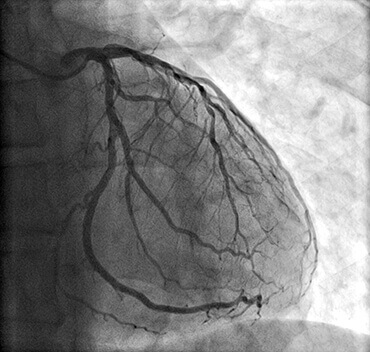Coronary Artery Surgery
 Coronary artery disease is the most common cause of disability or death in Australia. If you suffer from coronary artery disease consult your cardiologist about the best method to manage your individual situation. This takes many forms, but starts with management of risk factors including cessation of smoking, and control of elevated blood sugars, blood pressure and blood cholesterol with optimal medical therapy. Intervention may still be needed which involves catheter based “stenting” or surgical based “coronary artery grafting”, or occasionally a combination. Whilst stenting has benefits in short hospital stay and rapid return to activity, surgery has better long term survival outcomes and better coronary patency rates, but requires an invasive procedure with longer hospital stay (5-10 days), and 1-2 month recovery period. The more extensive the degree of coronary artery disease and the more heart muscle at risk the greater the benefits of surgery compared to stenting. Discuss this with your cardiologist and surgeon.
Coronary artery disease is the most common cause of disability or death in Australia. If you suffer from coronary artery disease consult your cardiologist about the best method to manage your individual situation. This takes many forms, but starts with management of risk factors including cessation of smoking, and control of elevated blood sugars, blood pressure and blood cholesterol with optimal medical therapy. Intervention may still be needed which involves catheter based “stenting” or surgical based “coronary artery grafting”, or occasionally a combination. Whilst stenting has benefits in short hospital stay and rapid return to activity, surgery has better long term survival outcomes and better coronary patency rates, but requires an invasive procedure with longer hospital stay (5-10 days), and 1-2 month recovery period. The more extensive the degree of coronary artery disease and the more heart muscle at risk the greater the benefits of surgery compared to stenting. Discuss this with your cardiologist and surgeon.
All forms of coronary artery surgery including on-pump, off-pump, and minimal access are performed using internal thoracic “mammary” arteries, radial arteries, and leg “saphenous” veins. Coronary artery surgery is traditionally done using the cardiopulmonary bypass “heart-lung” machine to stop the heart and allow surgery on a still heart.
The surgery can sometimes be done without the need for stopping the heart – called “off-pump” surgery – this has benefits in hastening early recovery. This can be done through the routine sternal incision, called “OPCAB”, or through a small left chest wall incision, called “MIDCAB”, depending on the quality and number of coronary arteries that need to be grafted. This type of surgery has been performed by Dr Wolfenden for more than 20 years.




